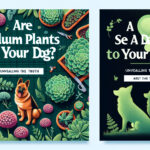Introduction to Sedum Plants and Canine Safety
Let’s dive into the world of sedum plants—a realm where green thumbs and four paws collide. These fleshy, vibrant succulents, known as the Trojan horses of the plant kingdom, are often tucked into rock gardens and perched atop sunny windowsills.
Beloved for their hardy nature, sedum—or stonecrop, as some fondly call them—beckon nature enthusiasts with their low-maintenance siren song. Yet, beneath their carefree exterior lies a question that nags at the heart of every dog-loving gardener: “Are these green beauties safe for my canine companion?”
Stories abound of tail-wagging, garden frolicking pups nosing their way through the underbrush, often nibbling on a leaf here or a stem there. It’s common doggy conduct, yet as a pet parent, it’s critical to decipher the botanical friend from foe. Not every shrub and succulent plays nicely with our furry friends, and it’s our duty to ensure the safety of our beloved pets.
Digging deeper, one stumbles upon an oasis of information that sheds light on the toxicity—or lack thereof—of sedum plants. Are they merely guiltless bystanders in the dog’s garden escapades, or hidden hazards sprawled in plain sight? The ambiguity of popular folklore and the mixed signals of diverse opinions demand a closer inspection.
Consider this: you’ve just brought home an assortment of sedums from the local nursery, proud of your aesthetic selection and the forthcoming enhancement to your botanical ensemble. Yet, as your pooch sniffs eagerly around the new foliage, the urgent question lingers, urging you to seek clarity amidst the sea of conflicting anecdotes.
This conundrum isn’t mere conjecture; it’s a practical dilemma faced daily by gardeners and pet owners worldwide. To resolve this puzzle, we must undertake a journey through the lens of experts and the wisdom of firsthand experiences, stripping away the layers of myth to reveal the heart of the truth.
As the sun casts its golden hour glow upon your verdant sanctuary, the time is right to unravel the mystery: are sedum plants toxic to dogs? Stay tuned as we unfold the petals of knowledge, revealing the answer that could redefine the harmony between your garden’s greenery and the safety of your tail-wagging pal.
Understanding Plant Toxicity and Dogs
When we hear ‘toxic plants,’ it’s like a red flag going up for pet owners. But what does it really mean for something to be toxic, especially when it comes to our four-legged friends? Imagine this: your playful pup is romping around the garden, and there it is, a beautiful sedum plant. But before you let Sparky get too close, it’s crucial to unpack the suitcase of ‘toxicity’ so you can understand just what you might be dealing with.
First off, not all ‘toxic’ plants are created equal. It’s not like they’re all sitting there twirling their villainous mustaches, plotting against our pets. In fact, when we say a plant is toxic to dogs, we’re talking about how certain chemicals present in the plant can potentially harm your dog if ingested. Sometimes it’s a mild upset tummy we’re talking about, and other times—it could be a rush to the vet kind of situation.
To properly assess the toxicity, scientists and vets look at the specific plant components—like saponins, for instance, which just so happen to be in sedum plants. These guys can cause anything from mild irritation to more severe health issues in dogs. It’s kind of like how some humans can’t handle lactose. Similarly, our canine pals may react negatively to certain plant bits that don’t bother other animals.
Let’s put it in perspective with a real-world scenario. Picture this: your neighbor’s dog, Buster, decides to try a new ‘salad’ consisting of your garden’s sedum display. Fast forward a few hours, and Buster’s not looking too good—poor thing’s got diarrhea and is vomiting. That’s a telltale sign that the sedum’s saponins didn’t sit well with him. It’s a stark reminder that, just like people have food allergies and intolerances, our dogs can have adverse reactions to certain plants.
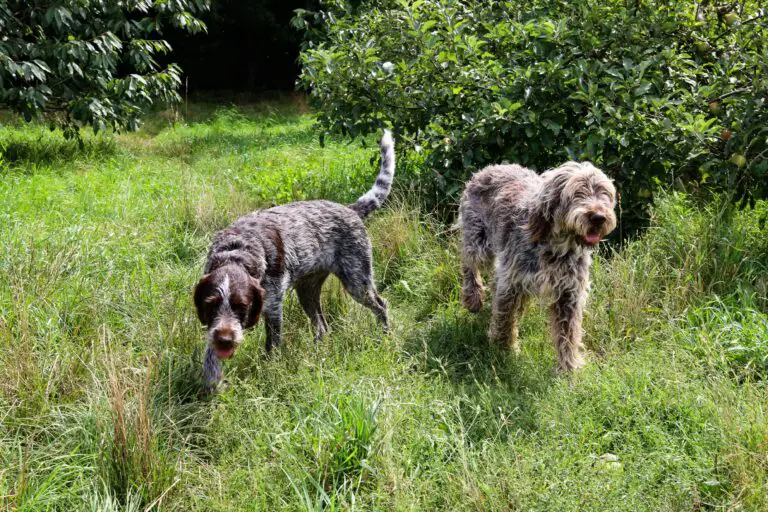
Knowledge is power, especially when it’s about keeping your dog safe. If you’re curious about the different types of sedum plants and which ones might be safer around pets, it’s a great idea to do your homework. At the end of the day, understanding plant toxicity is the key to ensuring that your backyard doesn’t turn into a no-dog’s land.
How Toxicity is Determined
Assessing a plant’s toxicity isn’t a guessing game. There’s a science to it that involves evaluating the type and quantity of the toxic substance, the size and health of the dog, and the pet’s unique sensitivities. Think of it as a puzzle where all the pieces need to fit together to see the full picture of how dangerous a plant can really be to your dog.
It’s vital to note that toxicity levels can vary widely from one plant to another and even within different parts of the same plant. Some parts may be perfectly fine, while others could cause a variety of symptoms from mild gastrointestinal issues to severe neurological problems.
So, when it comes to sedum plants, the bottom line is this—stay informed, keep an eye on your dog’s garden adventures, and always have your vet’s number handy, just in case. It’s the best way to ensure your furry best friend stays happy, healthy, and far from harm’s way.
Common Types of Sedum Plants and Their Toxicity Levels
When it comes to creating a pet-safe garden, it’s important to know which plants can pose a threat to our four-legged friends. Sedum plants, for instance, are popular succulents that beautify our homes and gardens with minimal fuss. But as a dog owner, it’s only natural to ask: are sedum plants toxic to dogs? Let’s dive into the details and find out just how safe your garden is for your canine companion.
Sedum, also known as Stonecrop, is a genus that encompasses a variety of succulent plants, with over 400 species to its name. These resilient plants are not just easy on the eyes but are also generally considered safe for dogs. However, it’s always better to be cautious as individual plants can have different levels of toxicity. One famous member of the Sedum family, the Sedum acre or “Biting Stonecrop,” has been known to cause mild gastrointestinal upset when ingested in large quantities. It’s important to monitor your dog’s interaction with these plants, especially if they have a habit of snacking on your greenery.

While most Sedum species are classified as non-toxic, other factors such as pesticides or plant health can turn a non-threatening plant into a hazard. For instance, a Sedum treated with certain chemicals might not be as safe as its untreated counterpart. Therefore, it’s always a good practice to keep any treated plants out of reach of curious canines.
If you’re ever in doubt about the safety of your garden plants, consulting resources like the ASPCA’s list of non-toxic and toxic plants can offer peace of mind. And let’s not forget the importance of cultivating a safe and engaging environment for our pets, ensuring both their curiosity and well-being are catered to. Keep in mind, nurturing a hazard-free zone for your furry friends doesn’t mean you have to sacrifice on style or variety in your garden!
In summary, the vast majority of sedum plants pose no significant threat to dogs. However, it’s imperative to keep an eye on your pets and educate yourself about the plants you choose to nurture. After all, a beautiful garden and a healthy, happy pup are the ultimate rewards for a conscientious pet parent.
Recognizing the Symptoms of Sedum Plant Poisoning in Dogs
It’s a warm, lazy afternoon, and you’ve just watched your furry best friend, Max, sniff around your garden perimeter, curiously nibbling at the lush succulents he finds. Among these green buddies are sedums—their thick, fleshy leaves glistening in the sun. But little did you know, some sedum species could cast a dark cloud over this serene picture. Yes, you heard that right; some sedum plants may hold toxins that can make our canine pals sick.
So, you might be asking, “How can I tell if Max has munched on something he shouldn’t have?” Look no further because we’re here to talk about the tell-tale signs of sedum plant poisoning that may signal your dog has indulged in these deceptive greens. And keep in mind, quick recognition can make all the difference.
The onset of symptoms can vary, but you’ll want to keep an eye out for any sudden changes in your dog’s typical behavior or health. Is Fido acting more lethargic than usual after his garden escapades? Perhaps he’s suddenly not interested in his favorite squeaky toy or his tail wags are less enthusiastic. Or, even more concerning, maybe he’s exhibiting any of the following symptoms:
- Vomiting and/or diarrhea – This is often the body’s immediate reaction to ridding itself of toxins.
- Drooling more than usual – This may be the first clue that points towards nausea or oral irritation.
- Loss of appetite – When they’re feeling under the weather, dogs, much like their human companions, can turn down even their most beloved treats.
- Weakness or lethargy – If your usually zoomy pup now prefers to lay low, it could be a cause for concern.
- Changes in urine color – Keep a lookout for any changes, which could indicate a more systemic reaction.
- Difficulty breathing – Though less common, respiratory issues can denote a severe response.
Imagine you’re out for a stroll with Daisy, the usually sprightly poodle, and notice she’s suddenly staggering slightly, or her eyes seem unfocused. These could be signs that she’s experiencing something more sinister than a simple off-day—a potential side-effect of poisonous plants. When observing any combination of these symptoms, especially after a garden exploration session, it’s advisable to start considering potential culprits in the vicinity, like those sedums.
And let’s not forget about the crucial role of early detection. Regular visits to a comprehensive guide on pet-friendly plant care, along with close monitoring of your dog’s garden activities, could prevent the distressing scenario of a poisoning incident.
Dearest pet owners, your vigilance could be the superhero cape you didn’t know you wore. Now that you’re armed with knowledge, you can ensure Max or Daisy steer clear from danger, and you can confidently fill your garden with joy rather than worry. Keep this valuable information in your pet care toolkit, and you’ll be well on your way to safeguarding your pup’s tail-wagging adventures.

If you notice any signs that holler ‘something’s wrong here!’, don’t hesitate to contact your vet immediately. The sooner a toxic ingestion is handled, the better the odds for a wagging tail ending. Stay alert, dear gardening aficionados and dog lovers, because the safety of our four-legged buddies is always worth the watchful eye.
Creating a Dog-Safe Garden: Alternatives to Sedum Plants
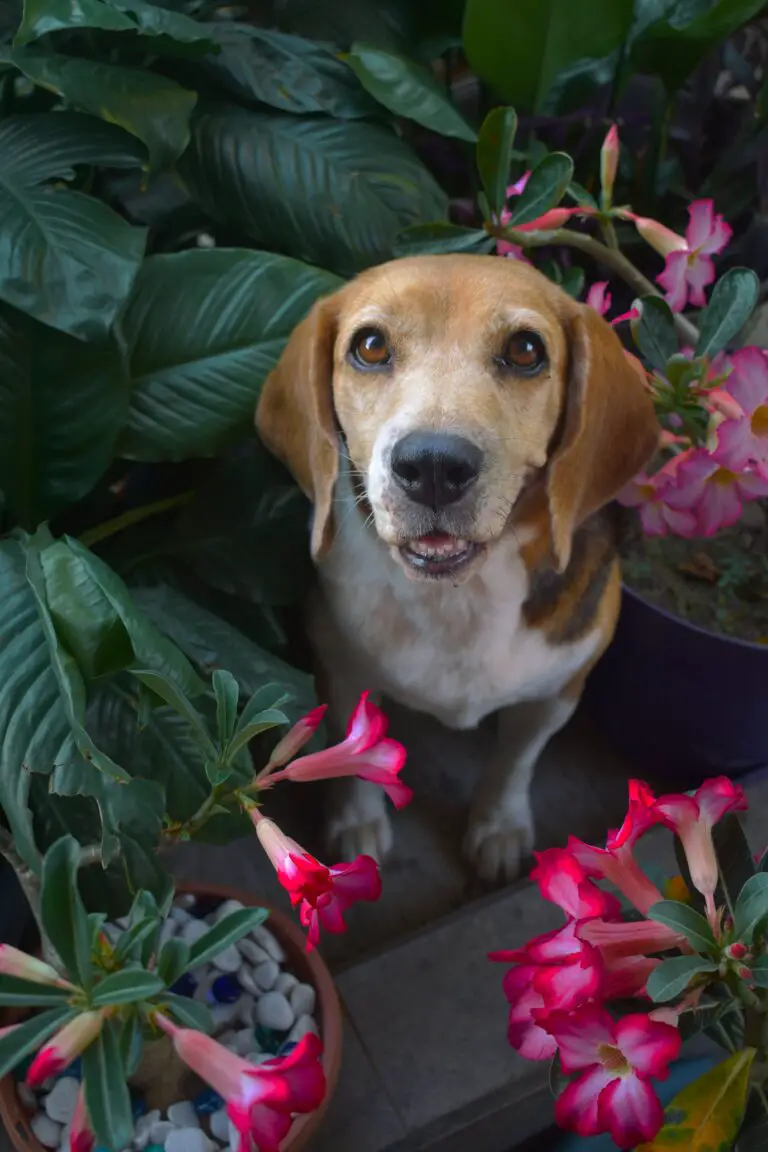
When you envision your dream garden, it’s like a serene portrait with your furry friend blissfully romping around, isn’t it? However, the presence of sedum plants can turn that peaceful image into a worrying scenario if you’re aware of their toxic properties to dogs. But fear not, plant enthusiasts and dog lovers alike! There’s a whole world of stunning, non-toxic alternatives that’ll keep your tail-wagging companion safe and your garden vibrant.
Let’s dig into some paw-some options! For instance, consider the spirited Calendula, with its splash of sunny blooms, it’s as harmless as it is charming. Picture your four-legged pal bounding through the garden with Calendula’s vibrant orange and yellow petals fluttering in the breeze, a photo-worthy moment free of toxicity worries. And what about the classic beauty of Snapdragons? Not only are they a feast for the eyes with their whimsical flowers, but they also pose no threat if Fido decides to take a curious nibble.
Then there’s the sturdy and splendid Herbs like Rosemary and Thyme. They’re not just kitchen heroes; they also add texture and aroma to your garden tapestry while being consistently safe for your canine companions. Imagine a lazy Sunday afternoon, the scent of Rosemary in the air, and your dog lounging nearby—such an idyllic setting is easily within reach! Plus, these herbs have the added perk of being culinary delights, ready for you to pluck and sprinkle onto your evening meal.
If your green space craves a little height and drama, look no further than the magnificent Astilbe. Towering with feathery plumes, it’s a showstopper that’s as safe as it is statuesque, turning heads but not stomachs. As fall comes around, and the leaves change, your dog can leap through piles of autumnal joy without a care in the world—and the Astilbe will stand proud, a testament to your thoughtful garden choices.
No garden is complete without ground cover, and creeping thyme is the perfect fit. Its dense mat of foliage is a heaven-sent playground for pooches and provides an emerald carpet that’s both enchanting and dog-friendly. Visualize a game of fetch that ends with your dog sprawled out on the thyme, soaking in the sun’s kisses—a garden memory that’s as safe as it is sweet.
Transforming your green retreat into a haven for your dog doesn’t have to be a daunting task. With these pleasing plant alternatives, you can craft a space that is both aesthetically pleasing and worry-free for your loyal companion’s wellbeing. Now, who’s ready to plant a paradise?
Practical Tips for Preventing Your Dog from Eating Sedum Plants
As a pet parent, your dog’s safety is always a priority. When it comes to the plants in and around your home, it’s essential to understand which ones may pose a risk to your furry friend. Sedum plants, with their fleshy, succulent leaves, might look tempting to your curious canine, but taking preventative measures is crucial for keeping them out of harm’s way. Let’s dive into some hands-on advice to prevent a potentially toxic tango between your dog and your garden’s sedum!
Know Your Garden: Identification Is Key
First off, get familiar with the sedum species you have. Not all green is good for your pooch, and sedum plants can vary widely in appearance. If you’re unsure, a quick picture and an online search can be your best friend. Once you know what you’re dealing with, you can start tailoring your garden to be both beautiful and dog-friendly. Consider placing sedum plants in elevated pots or beds, out of nose’s reach, to create a barrier that keeps wagging tails at a safe distance.
Training: The ‘Leave It’ Command
Training your dog to understand the ‘leave it’ command can be a lifesaver—literally. Begin by practising indoors with less tempting objects before graduating to the garden. Remember, the goal is to make listening to you more rewarding than the allure of those succulent leaves. Every successful ‘leave it’ deserves a treat and a heartwarming praise that assures your dog they’ve made the right choice. Make it a game, and with consistency, you’ll see impressive results.
Safe Alternatives: Distract with Dog-Friendly Options
Does your dog love to nibble? Why not introduce some canine-safe greenery into your backyard? There are several non-toxic plants that dogs love to sniff and even taste. Ample play sessions and interactive toys can also divert attention from your garden. Or try sprouting some indoor wheatgrass—it’s like a salad bar for your dog, and tastier than sedum!
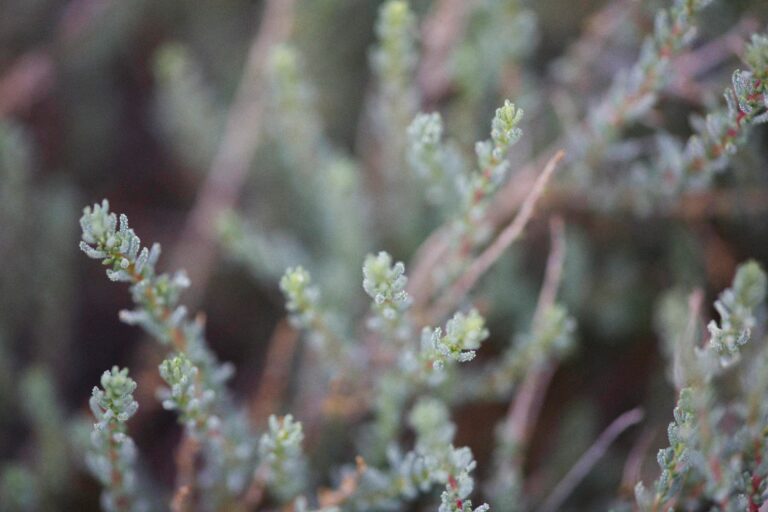
Natural Repellents: Gentle Yet Effective
Some natural deterrents can work miracles. Consider sprinkling some cayenne pepper around your sedum plants. The spicy scent is usually a no-go for dogs. Or, plant some herbs with strong scents between your sedum plants. Lavender, rosemary, and mint can create a fragrant shield that most dogs would rather not cross. It’s a win-win, more green for your garden and a safe snoot for your dog.
Monitoring: The Best Prevention
Last, but never least, supervision is your best tool. Even with all the training and deterrents, there’s no substitute for a watchful eye. When your dog’s roaming the garden, make it a habit to tag along. It not only prevents mishaps but also nourishes the bond between you and your four-legged explorer. A game of fetch away from the sedum plants can ensure they tire out with fun rather than with a taste test!
What to Do If Your Dog Ingests a Sedum Plant
Imagine a typical day in your garden, the sun is shining down, and your loyal canine companion is playfully exploring every leaf and flower. But what happens when Fido’s curiosity leads him to sample one of your lovely sedum plants? It’s a scenario no pet owner wants to consider, but being prepared can make all the difference. Let’s chew over the steps you need to take if you catch your canine nibbling on this eye-catching yet controversial plant.
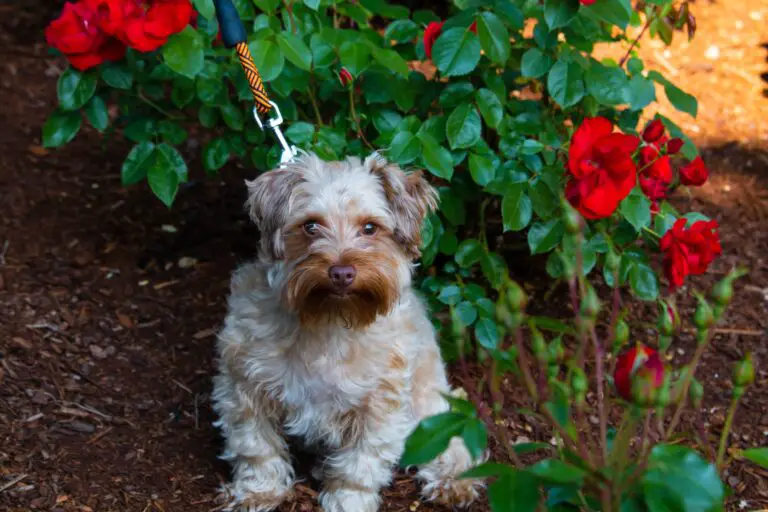
First, remain calm; sedum plants are generally considered low-toxicity to pets. This doesn’t mean they’re a canine snack, though. If your pooch does decide to chow down on these succulents, act swiftly. Monitor for any signs of distress such as vomiting, diarrhea, or lethargy. These symptoms might manifest if your pup has a particularly sensitive stomach or allergies.
Immediate Steps to Take
Here’s your action plan: if you see Rover raiding the rockery, remove any plant material from his mouth promptly. A gentle rinse with water can help to eliminate any remaining sap. Unlike Lassie’s dramatic television escapades, the signs may be subtle, so look closely. Should any symptoms arise — or even if they don’t — a call to your veterinarian should be your next move. Your vet can offer specific advice and may want to see your pet to ensure his safety.
Let’s say your furry friend is a real garden glutton and has managed to ingest a lot. In this case, your vet might recommend bringing him in. At the clinic, they might induce vomiting, administer activated charcoal, or provide supportive care depending on the quantity eaten and your dog’s reaction.
Remember Poppy, the poodle who became an inadvertent internet star after eating half a flower bed? While Poppy bounced back in no time, her story reminds us that even a seemingly harmless plant can pose a risk to our inquisitive pups. Keep an eye on your green spaces and consider fencing off areas with plants that you’re uncertain about.
Armed with knowledge and a watchful eye, you can ensure that your horticultural haven remains a paradise for both you and your four-legged friends. When in doubt, consult your vet, and keep that garden gate closed — after all, prevention is the best cure!
Safe Gardening Practices for Pet Owners
When your furry friend roams through your garden, the last thing you’d want is for their playful frolic to end in an emergency trip to the vet. With the rise of gardening as a hobby, it’s crucial to be aware that not all plants are pet-friendly. This is especially true when it comes to sedum plants, often a topic of concern for dog owners who love to garden. But fret not, there are plenty of gardening practices that can help you create a safe haven for your beloved pooch.
Luckily, creating a pet-safe garden isn’t just about restricting your plant choices—you can cultivate a space that’s both beautiful and non-hazardous to your four-legged companions. Take it from Jillian, a seasoned gardener from Maine, who discovered her dog, Buster, had an unfortunate taste for her flower beds. “I decided to swap out my sedum for pet-safe alternatives,” she shares. “Now Buster can dig around worry-free, and I can enjoy gardening without stress.”
Start by assessing which plants you currently have and researching their toxicity. If you’re not sure where to begin, look to organizations like the ASPCA for comprehensive lists of toxic and non-toxic plants for dogs. Consider fencing off certain areas or raising beds to keep wandering snouts out of trouble. Be as vigilant with your fertilizers and pest control as well. Always opt for organic, pet-friendly options that won’t harm your dogs even if they come in direct contact with the treated plants or soil.

Moreover, involving your pets in gardening activities can be rewarding and safe with a little preparation. For instance, while you plant your dog-friendly flora, your canine companion might be more interested in their own digging box. Just like a sandbox for kids, a dedicated space filled with soil or sand for dogs can provide hours of fun without damaging your plants or exposing them to toxins.
Remember, supervision is key. If you’re out in the garden, keep a close eye on your dogs. Quick action can prevent the ingestion of a potentially harmful plant or substance. It’s all about balance and understanding that your garden can thrive alongside your dogs, not in spite of them. The outdoors is a shared space, and with these practices, you’re promoting a safe, enjoyable environment for everyone—paws included.
Expert Insights: Veterinarians Weigh in on Sedum Plants and Dogs
When it comes to your furry friends, every pet owner wants to ensure their garden is a safe place for exploration and play. Sedum plants, with their appealing fleshy leaves and vibrant blooms, often raise questions for dog owners about their toxicity. To clear the air, we’ve consulted with leading veterinarians to provide you with an authoritative take on sedum plants and their impact on canine health.
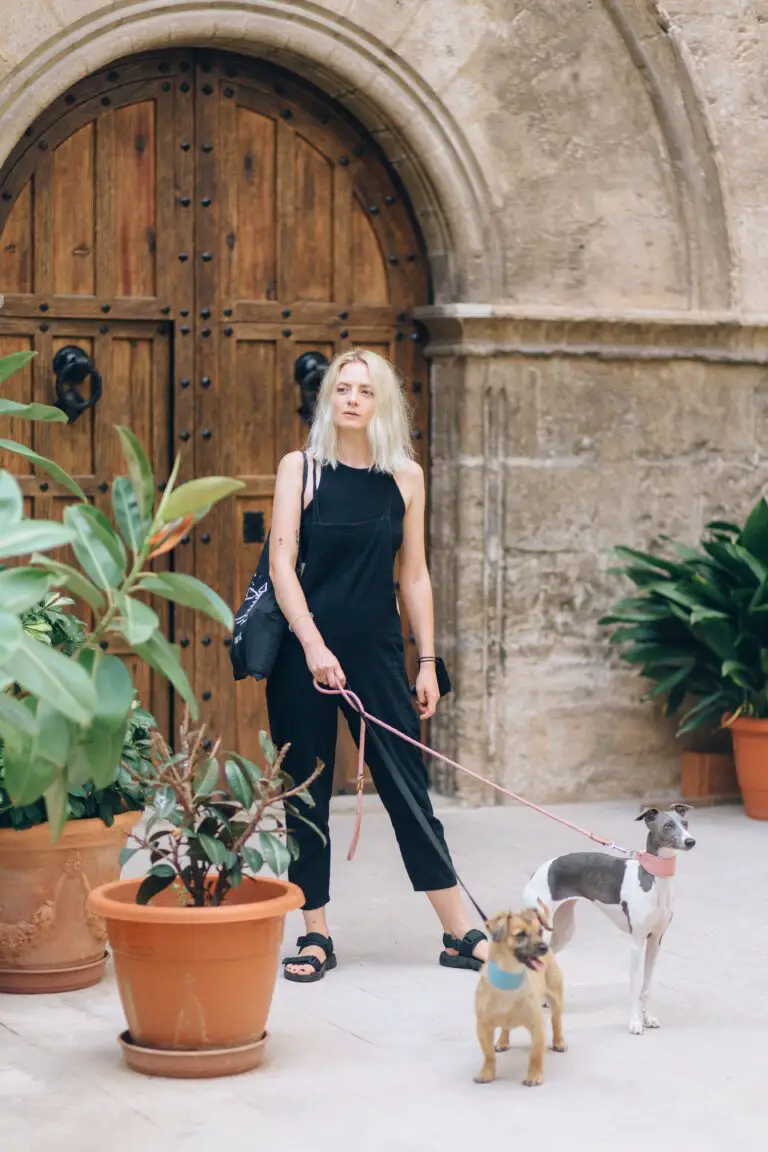
Dr. Fiona Barkley, a specialist in veterinary toxicology, points out that while sedum plants are not highly toxic, they can cause mild gastrointestinal upset in dogs if ingested in significant quantities. “We’ve seen cases where dogs exhibit symptoms like vomiting and diarrhea after munching on these succulents,” explains Barkley. She emphasizes that while the likelihood of severe poisoning is low, it’s crucial to monitor your dog’s behavior around these plants.
Another veterinarian, Dr. Henry Collins, adds to the discussion by sharing an encounter with Max, a Labrador who had a penchant for digging in his owner’s rock garden. “Max was brought in with mild lethargy and an upset stomach. After some investigation, we determined that he had ingested a fair amount of sedum leaves,” recounts Dr. Collins. He suggests proactive measures, such as training dogs to avoid certain plants or creating physical barriers to prevent access.
Despite the potential for minor upset, Dr. Alyssa Martinez highlights a silver lining. “In my years of practice, serious complications from sedum ingestion are exceedingly rare. Plus, these plants can often deter dogs due to their bitter taste,” Martinez reassures. She advises dog owners to introduce sedum plants gradually, ensuring that dogs are supervised until it’s clear they’re not interested in eating them.
Conclusively, while sedum plants aren’t considered a major threat to dogs, the consensus among veterinarians is to exercise caution. By keeping a watchful eye on your dog’s plant interactions and taking simple preventive measures, you can maintain a dog-friendly garden that’s both beautiful and safe.
Frequently Asked Questions
When you’re a pet parent, every leaf and petal can seem like a potential threat, can’t it? Don’t worry; you’re not alone in wanting to ensure the safety of your furry friends, especially concerning the plants you adorn your home with. Sedums, with their alluring fleshy leaves, seem harmless enough, but are they really safe around your canine companions? Let’s delve into the world of sedums and dogs with some straightforward Q&A!
Are Sedum Plants Actually Poisonous to Dogs?
Picture this: your beloved pooch, tail wagging, comes trotting over to that pretty patch of sedum in your garden. They’re curious little sniffers, aren’t they? But as that nose gets a bit too close for comfort, a question pounds in your head – is this going to end in a midnight dash to the vet? The good news is, sedum plants are generally non-toxic to dogs. That’s right, non-toxic! But before you heave that sigh of relief, remember that ‘non-toxic’ doesn’t always mean ‘no reaction.’
So, What Should I Do if My Dog Eats Sedum?
Imagine it: your dog just had a nibble of that sedum. Though it’s unlikely to be severely harmful, some dogs might still get an upset stomach. Symptoms to look out for include drooling, nausea, and gastric upset. Now, don’t go into full panic mode just yet. Keep an eye on your pet and provide fresh water. If Chip starts looking more pitiful than a rainy day or shows severe symptoms, play it safe and contact your vet.
Can Sedum Cause Allergic Reactions in Dogs?
Remember Fido’s birthday when he decided to roll in that patch of flowers and came out looking like he’d gone ten rounds with a bee? Just like that, it’s possible for some sedums to cause skin irritation in sensitive dogs. Itching, redness, or rashes could be signs your pup’s skin isn’t a fan of sedum. If your sedum sampler shows these signs, you might need to keep those greens out of reach or consider a dog-friendly gardening revamp.
While we love to chat about your dog’s health and safety, why not see it in action too? Here’s a video that discusses succulents and their toxicity for pets, so you can be ever the vigilant guardian for your precious pups!
Bottom Line: Will My Green-thumbed Lifestyle Put My Dog At Risk?
While most sedum varieties will let your furry friend live to bark another day, it’s important to remember that each dog is unique. What might pass without incident for one pup might not for another. You know your best bud better than anyone: their quirks, what they love to chomp on, and what makes them itch. Keep a vigilant eye, do your homework on the sedum varieties you bring home, and when in doubt, a call to the vet is never a bad idea.
As we’ve seen, canine curiosity doesn’t have to clash with your sedum sanctuary. With a bit of knowledge and watchful care, your gardens can be both florally fabulous and Rover-approved. So, whether your dog is a floral fan or just an innocent stroller by your prized sedums, you’re now better equipped to ensure their safety – and keep those tails wagging happily. Remember, the trick is to stay informed, stay observant, and when in doubt, stay on the safe side. Happy gardening!
